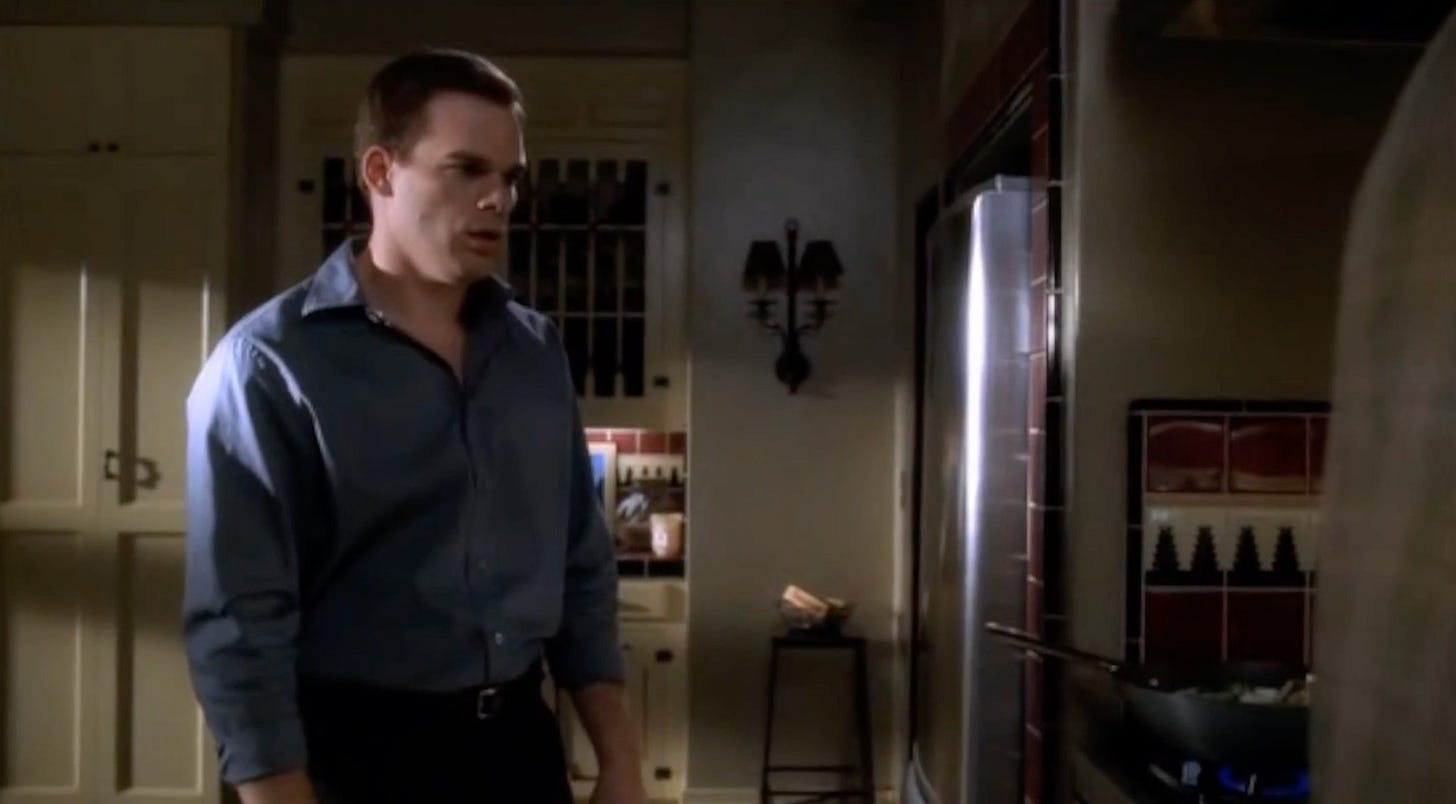Crossing The Line: SIX FEET UNDER
The framing and editing through this Six Feet Under scene drives home the argument's undercurrents, positioning David and Keith literally where they are emotionally and figuratively.
Establish (Put Your Thing Down)
The scene starts with David and Keith literally switching places: in a Medium-2-Shot, David moves Frame R-L, and Keith Frame L-R.
The next few angles (0:05-0:12) stay in complementary Medium-2-Shots. In one of those complimentary M2S, David takes a step back away from the counter, and the camera moves with him, keeping him Frame Left.

Both characters also ‘open up’ or turn their bodies slightly towards each other. This blocking starts to show us more of the characters, as to this point they were side-on to each other and had their backs entirely to camera. We can see more of the front or side of the 'focal character' with the back or shoulder of the other character on the far side of frame.
These moves combined essentially reframe both M2S — before, Keith was Frame Right, now he and David are both Frame Left.
Let Them Work It
Now, every time the scene edits between the M2S, the characters are essentially ‘on top’ of each other. If you were to crossfade between these shots instead of hard-cutting, David’s and Keith’s faces would overlap.
Each cut also changes what side of frame the character is on; eg. David is on the left in ‘his’ shot, but then in Keith’s shot, he’s dirty in the right side of frame.
The next few single-character shots (0:33-1:07) are closer shot-reverse-shot singles.
While above in his M2S David is Frame Left, now in his single he is Frame Right.
Keith, on the other hand, stays Frame Left.
Is it Worth It?
Line crosses often have a slightly disconcerting effect; often there’s one cross and then the scene ‘reestablishes the line,’ but here the shots cross-and-recross.
Going between a M2S and David's single, however he's not where you 'expect' him to be. The effect represents the destabilising feeling of the argument within their relationship, but especially on David.
Flip It And Reverse It
David and Keith move back to where they started the scene, crossing as the camera repositions (1:07-1:11).
David hands Keith a small bowl, mirroring the way they touched when Keith grabbed the salt shaker (top photo 0:08, bottom photo 1:12), but now they're literally reversed, and the handover is gentle and not aggravated.
Now through the end of the scene, the M2S position Keith FL and David FR. But their singles frame them oppositely: Keith FR and David FL.
The switch is still disconcerting, as they're not quite calm yet, but the effect within the singles is that they're closer, literally being pushed together by the frames.


Their emotional resolution is thus reflected in the framing.
Takeaways
The whole scene is constantly changing who is where, but where in the frame each character (especially David) is. Sometimes a cut from David’s single to Keith’s single ‘superimposes’ them, whereas other times uses the more ‘typical’ cut where they stay on their side of frame.
While this sort of edit can be confusing and destabilising — and thus should be used sparingly and with care and intent — sometimes that’s exactly what you want, especially when the characters are arguing or confused.
Finally, it helps to have a constant frame of reference within the scene. Often a scene with a great deal of line crossing puts something like a table or jail bars between the characters, to keep the audience oriented. Here there’s nothing between them (which is fitting, as they are being quite emotionally open), but the long counter space helps keep us oriented to where they are within their physical space, even as their emotional space shifts all over.









